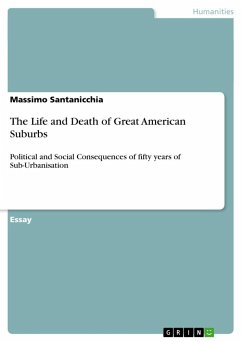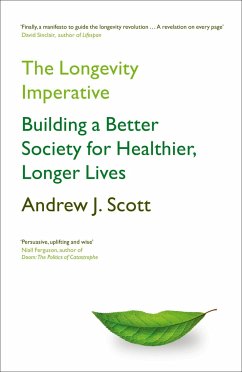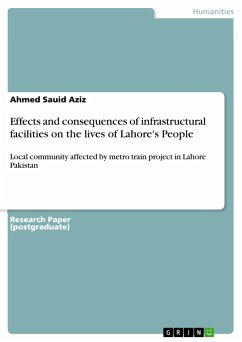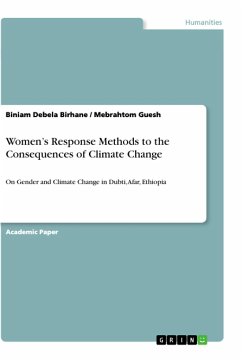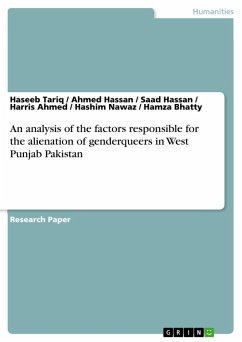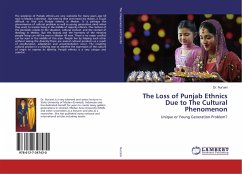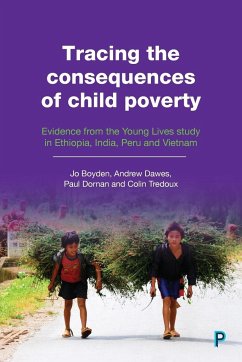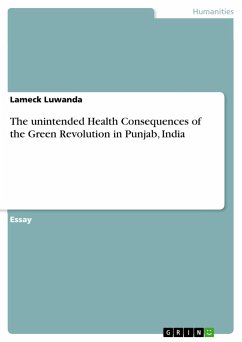
The unintended Health Consequences of the Green Revolution in Punjab, India

PAYBACK Punkte
0 °P sammeln!
Essay from the year 2018 in the subject Sociology - Medical Care, Oxford University, course: International health and tropical medicine, language: English, abstract: Poverty eradication programmes are designed to improve people's lives; meaning that all components of human life, for example economic, spiritual, psychological and mental, physical, and health should be improved. The name PEP is sometimes used interchangeably with poverty alleviation programmes, and they include long-term series of actions arising from a country's policy and might be influenced by other developed countries or int...
Essay from the year 2018 in the subject Sociology - Medical Care, Oxford University, course: International health and tropical medicine, language: English, abstract: Poverty eradication programmes are designed to improve people's lives; meaning that all components of human life, for example economic, spiritual, psychological and mental, physical, and health should be improved. The name PEP is sometimes used interchangeably with poverty alleviation programmes, and they include long-term series of actions arising from a country's policy and might be influenced by other developed countries or international organizations with goals of eradicating poverty. According to Saha, India has gone through three phases in an attempt to alleviate and eradicate poverty. These phases are the land redistribution of 1950-1960; period of addressing poverty and measures for rural areas and creation of employment opportunities and distribution of renewable assets at the end of the 1960s; and finally the phase of actions to accelerate economic growth and to build a conducive environment for spreading effect in the 1990s. In the second phase of PEP in India, there was a substantial rise in crop production achieved through the use of artificial chemical fertilizers, pesticides, modernized irrigation systems, mechanical pumps and high-yield crop varieties obtained from hybridization. It was the period when the green revolution was born in India. Adoption of new green technologies was necessary to ensure food production for the growing population and avoid famine. However, Indians had their type of agriculture which respected the ecosystem for the survival of all living beings. Food security was the primary concern, but there were also external forces from the western world, especially the United States of America. Some scientists found that the western world wanted to control India by fighting communism and make money from the green revolution by selling the necessary inputs like fertilizers, pesticides, and machinery.





